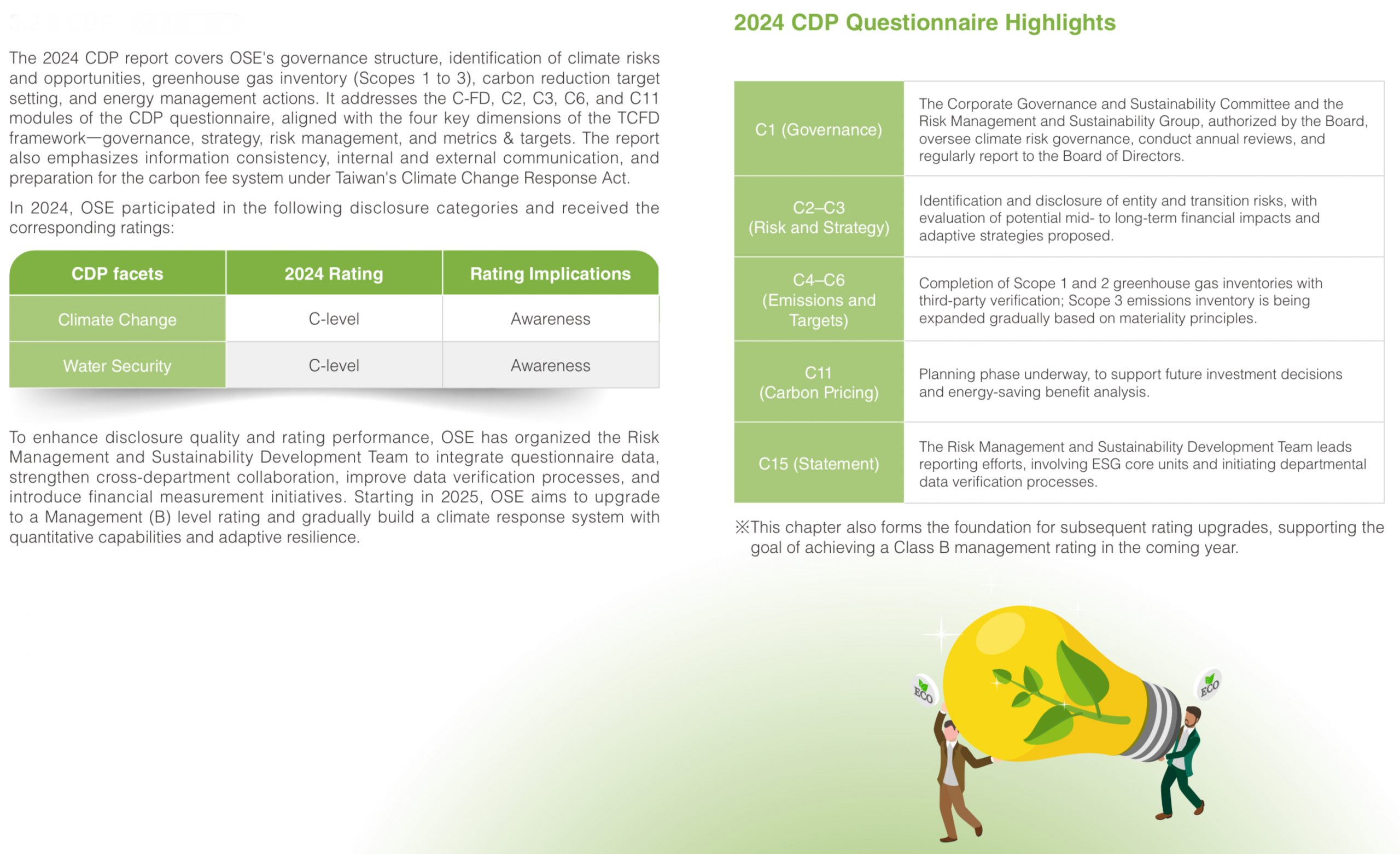Environmental Sustainability
Task Force on Climate-Related Financial Disclosures (TCFD)
As climate change causes increasingly frequent extreme weather events, companies face growing pressure to identify, manage, and disclose related risks. OSE adopts the TCFD framework to establish a climate management system covering four key areas: Governance, Strategy, Risk Management, and Metrics and Targets. This framework is aligned with questions C1 to C15 (the C-FD module) of the CDP questionnaire, using TCFD as the core to ensure that disclosures are systematic, transparent, and comparable.
Assessing Climate Change Risks and Opportunities
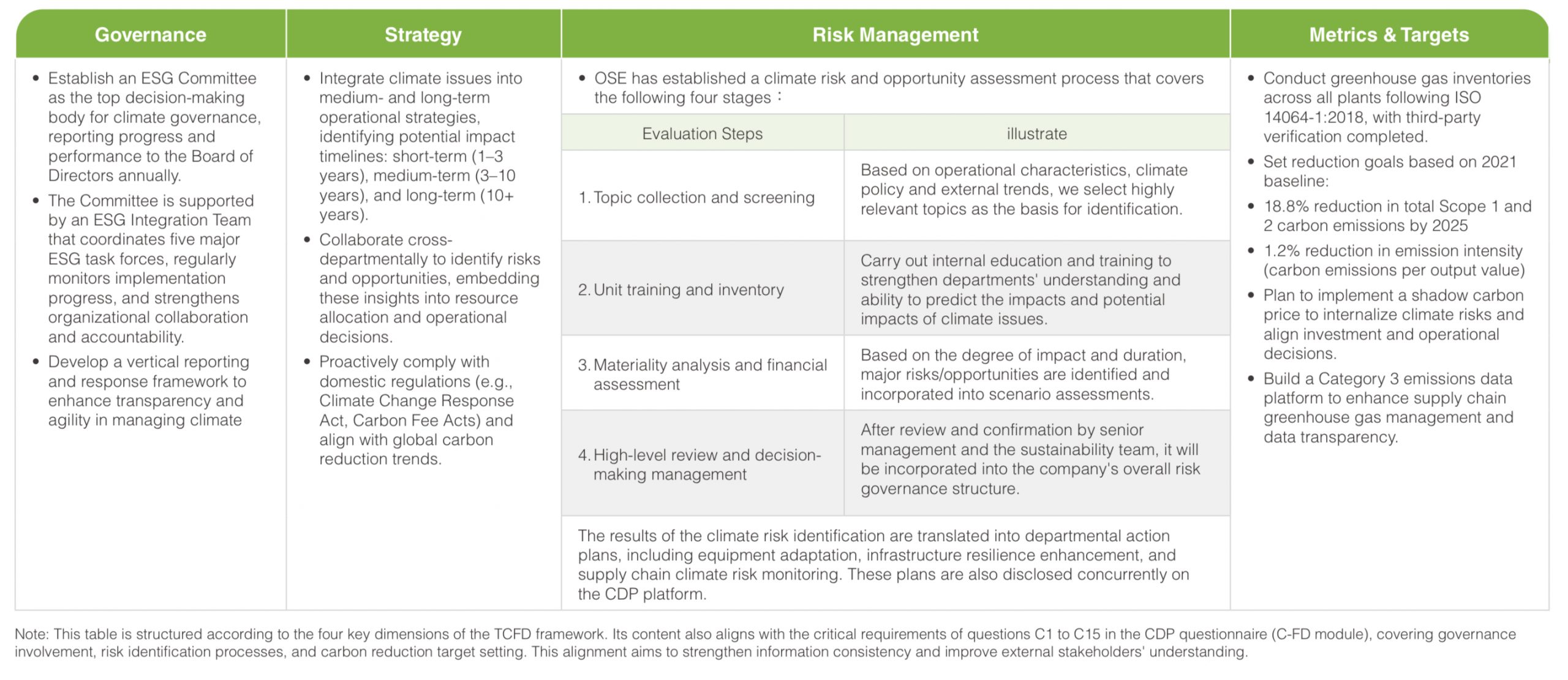
OSE adopts the TCFD framework as its core guideline, integrating governance structures, financial resilience, and risk management practices to enhance the company’s stable operations and sustainable competitiveness amid climate challenges. The process of identifying and managing climate risks is fully embedded within the company’s overall risk management system and is evaluated alongside financial, operational, and information security risks. After each business unit conducts an annual climate risk inventory, the Risk Management and Sustainability Team consolidates and coordinates the findings, presenting them for quarterly committee review. This ensures that climate-related issues are formally integrated into decision-making processes with a structured, ongoing, and forward-looking approach.
Key Climate Risk Identication and Adaptation Strategies
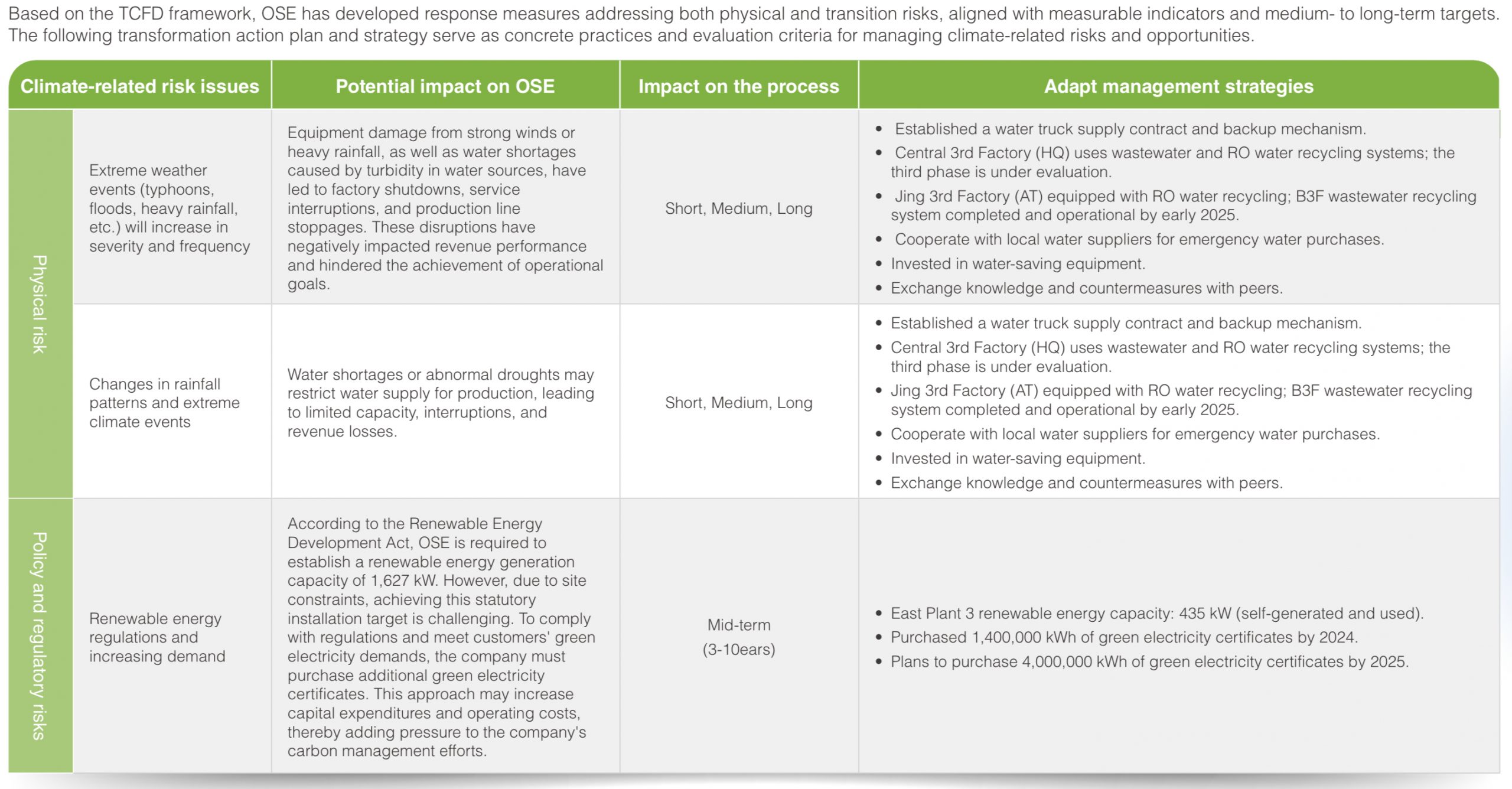
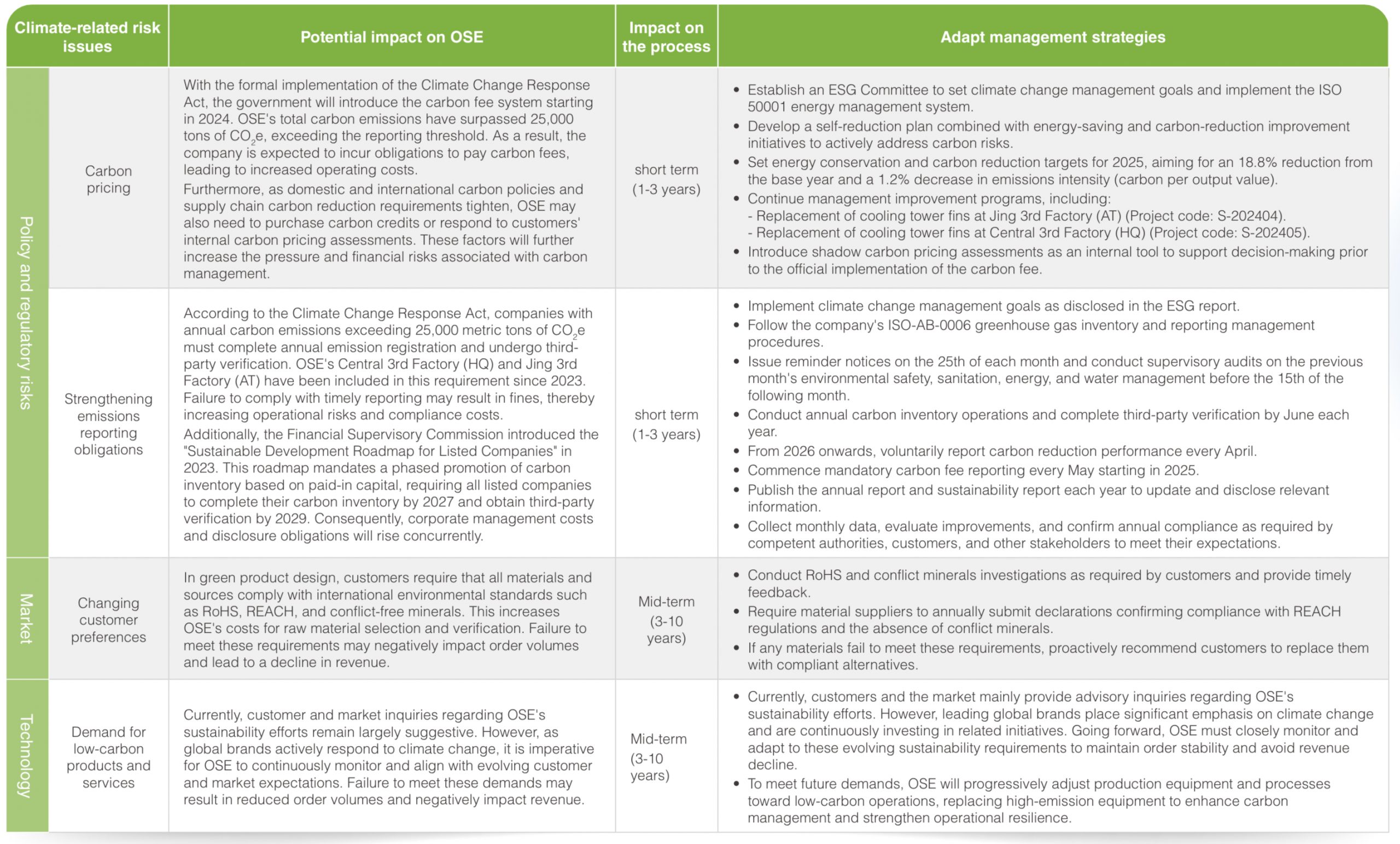
Key Climate Conference Issues and Adaptation Strategies
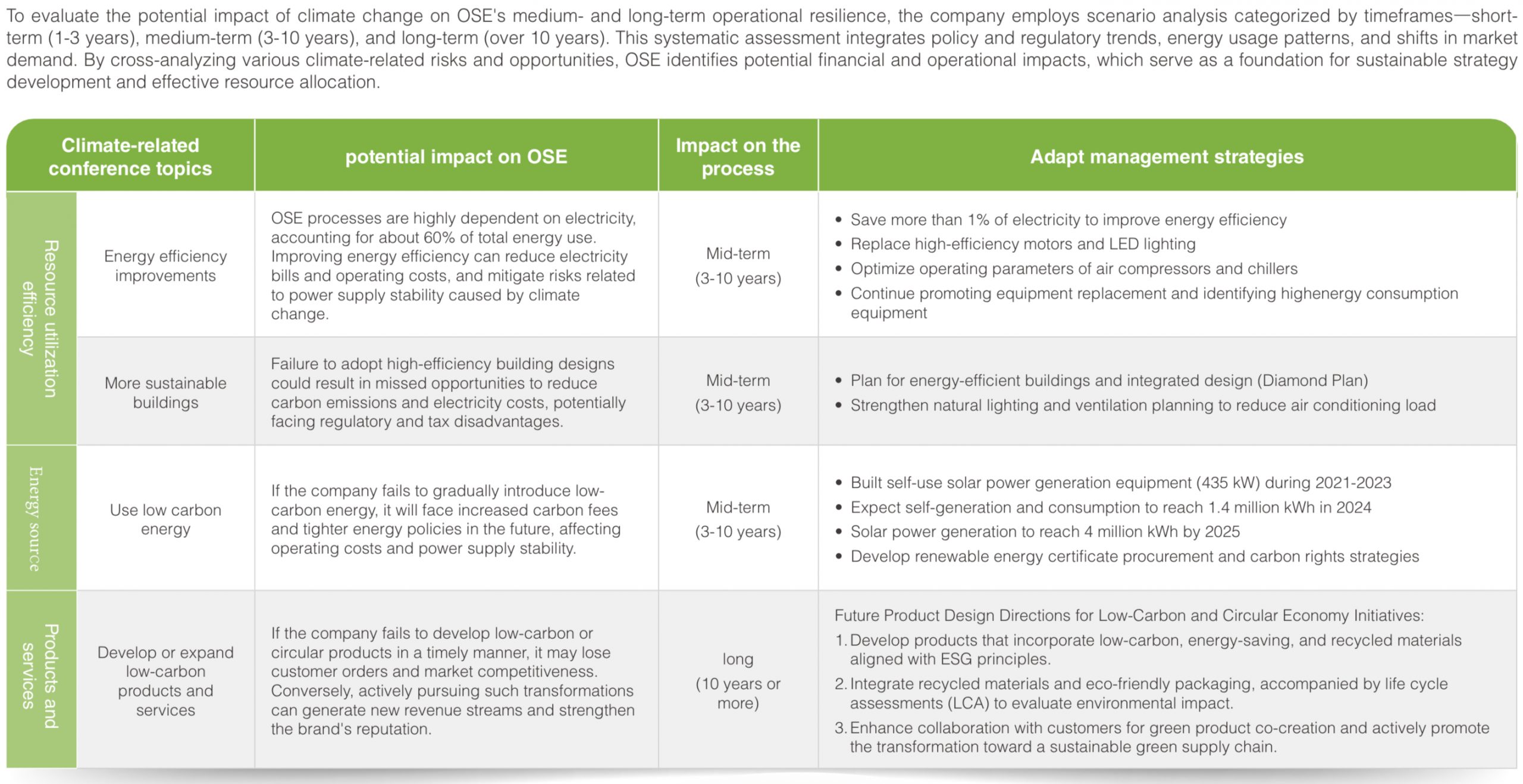
Greenhouse Gas Management
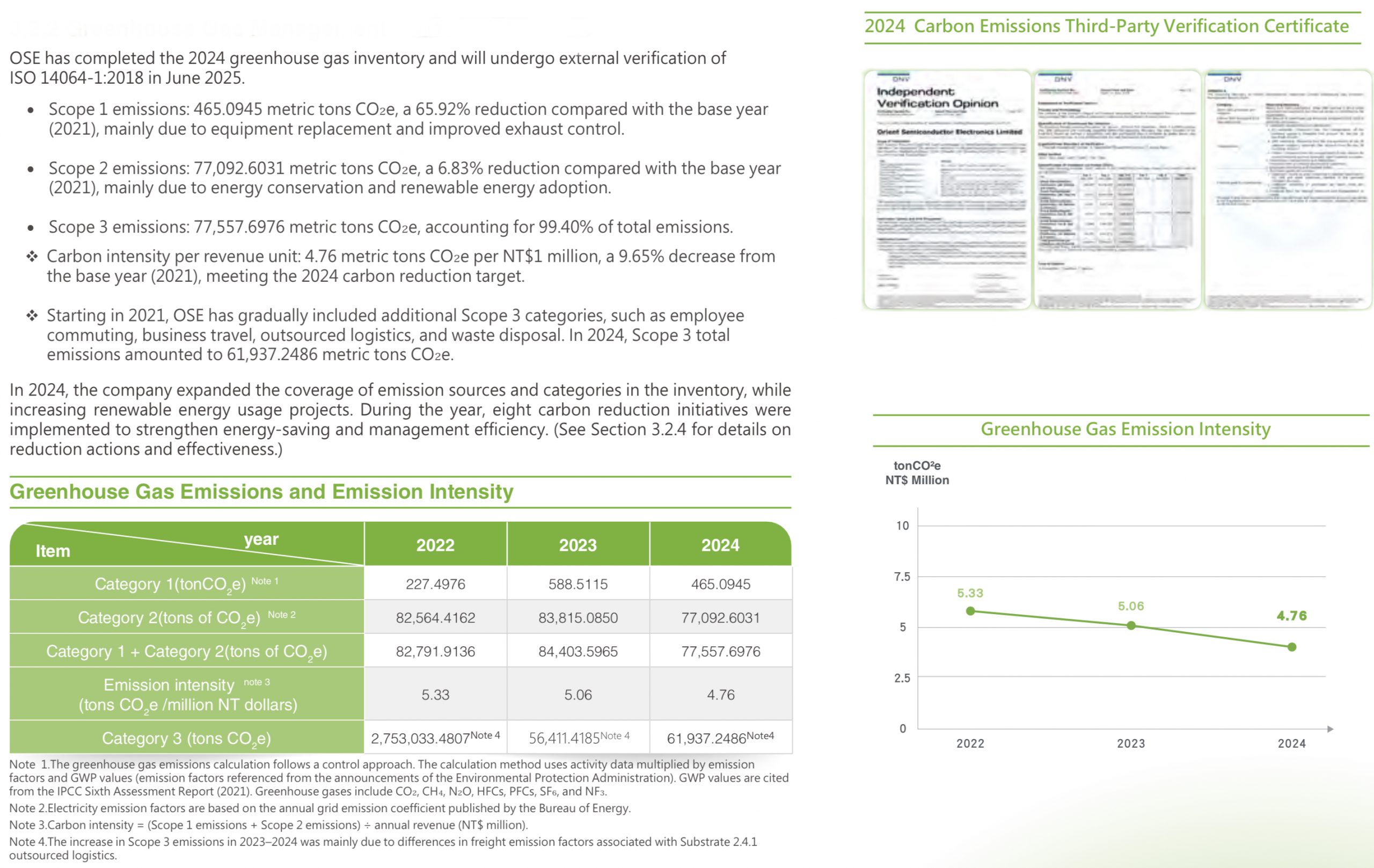
Energy Management
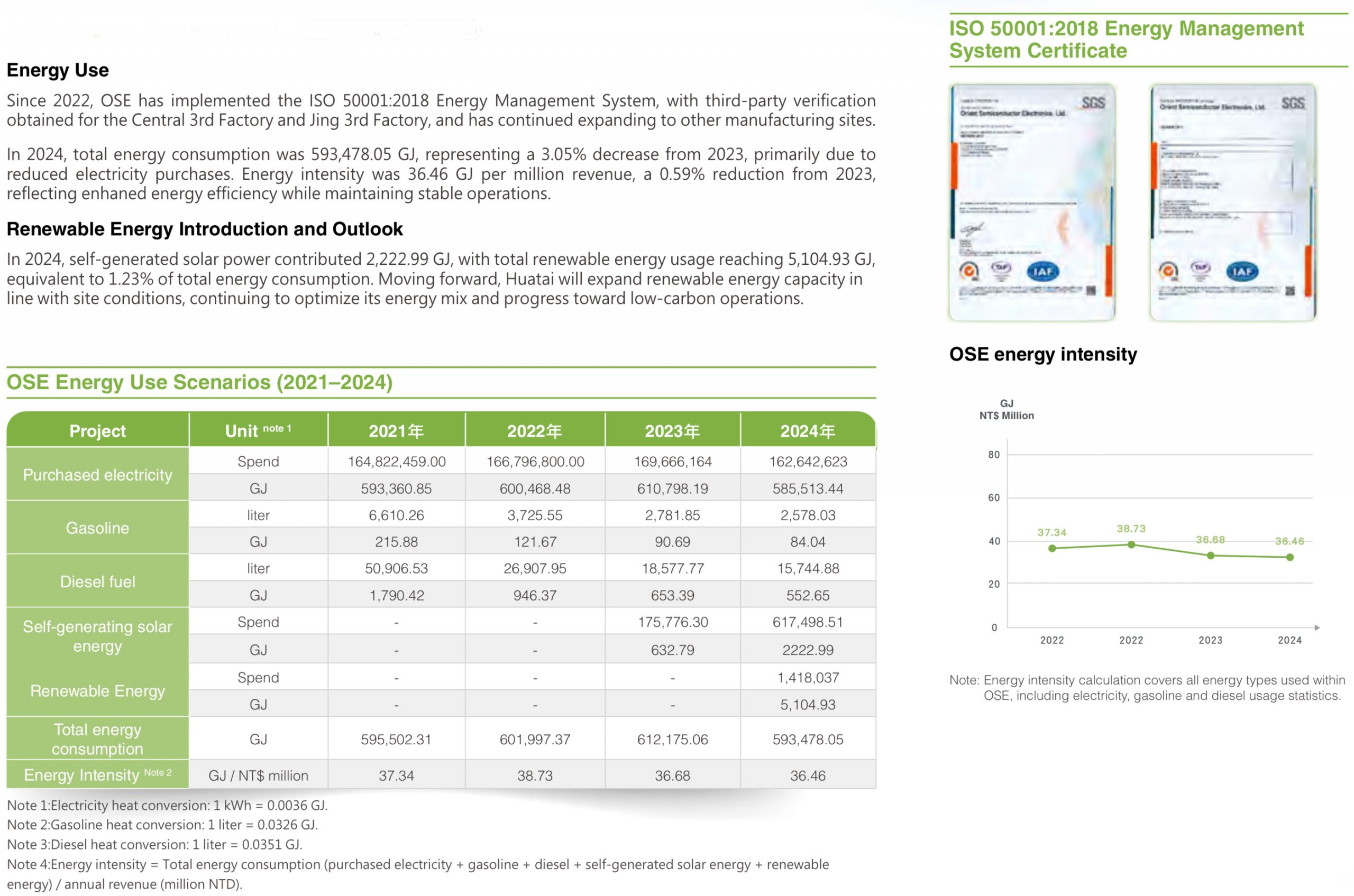
GHG Reduction Initiatives and Results
OSE recognizes the impact of climate change on business operations and is committed to reducing the environmental footprint of its activities. Using 2021 as the base year, OSE set the following greenhouse gas (GHG) reduction targets to be achieved by 2024:
• Achieve an annual electricity saving rate greater than 3.1% of electricity demand.
• Reduce Scope 1 and Scope 2 emissions by 1.8% compared to the base year.
• Lower GHG emission intensity by 0.2% compared to the base year.
Since 2020, OSE has implemented energy-saving and carbon-reduction initiatives through four main measures:
1. Optimize equipment operating hours to reduce idle energy consumption of utilities.
2. Replace outdated equipment to improve overall energy efficiency.
3. Install solar facilities to increase the share of renewable energy.
4. Purchase green electricity and obtain renewable energy certificates to strengthen the low-carbon energy structure.
In 2024, a total of eight energy-saving projects were completed, with a total investment of approximately NTD 23.49 million. These projects achieved cumulative electricity savings of about 4,784,352 kWh. Based on the emission factor for 2024 announced by the Energy Administration, MOEA (0.474 kg CO₂e/kWh), the savings equate to a reduction of 2,267.78 metric tons of CO₂e emissions Detailed results are presented in “Overview of the 2024 Energy Saving and Carbon Reduction Project
Action Results.”
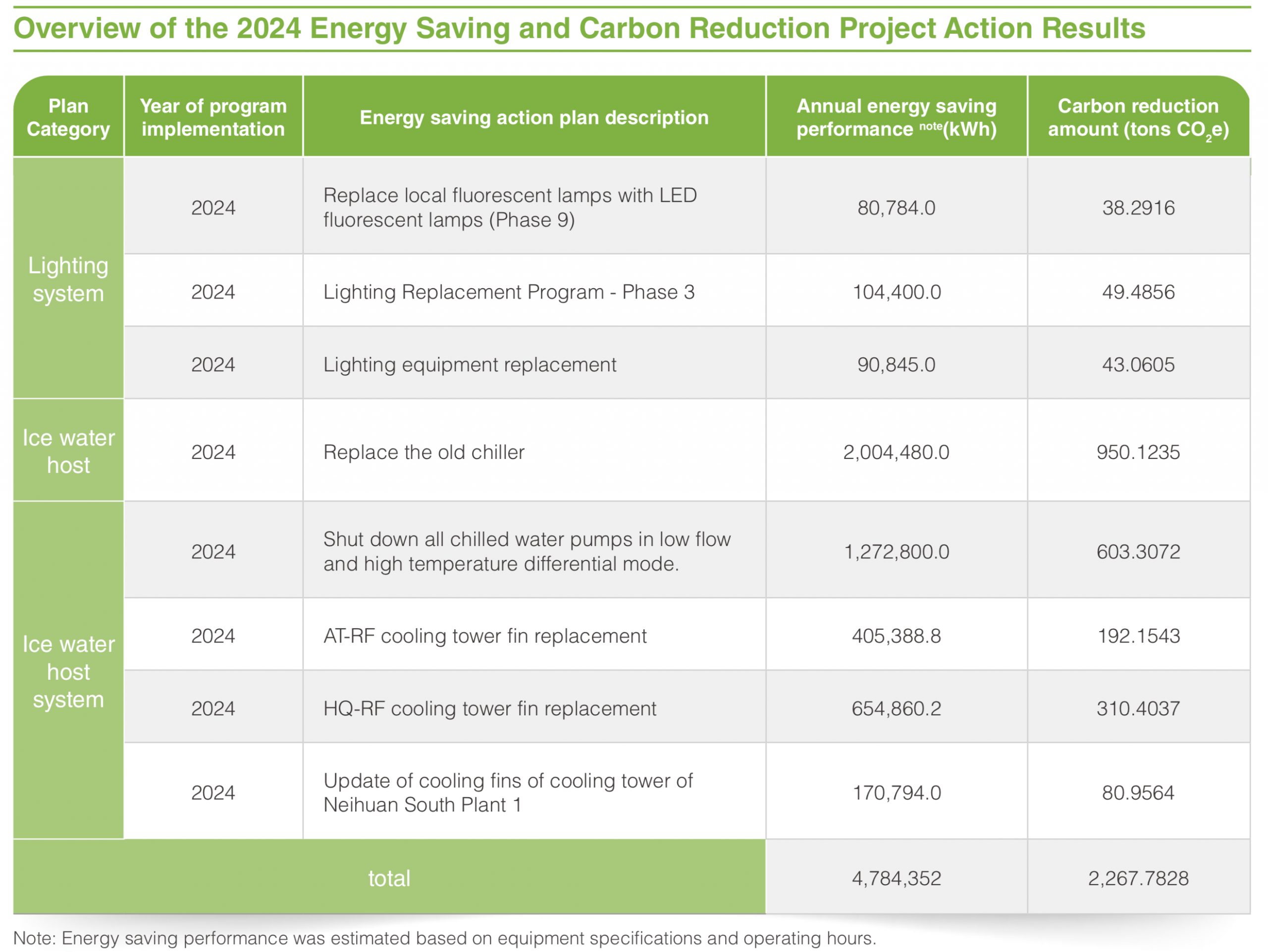
CDP
